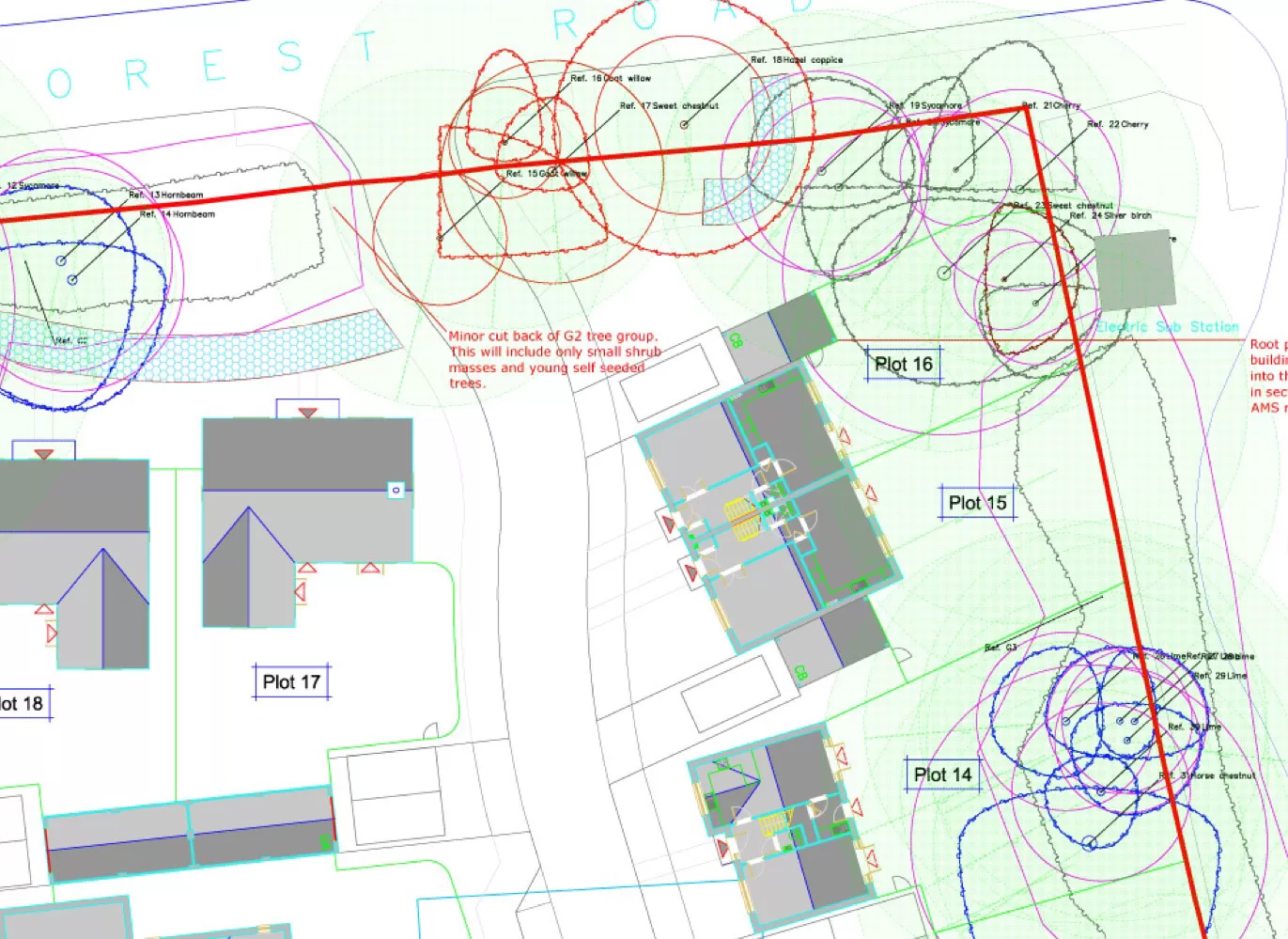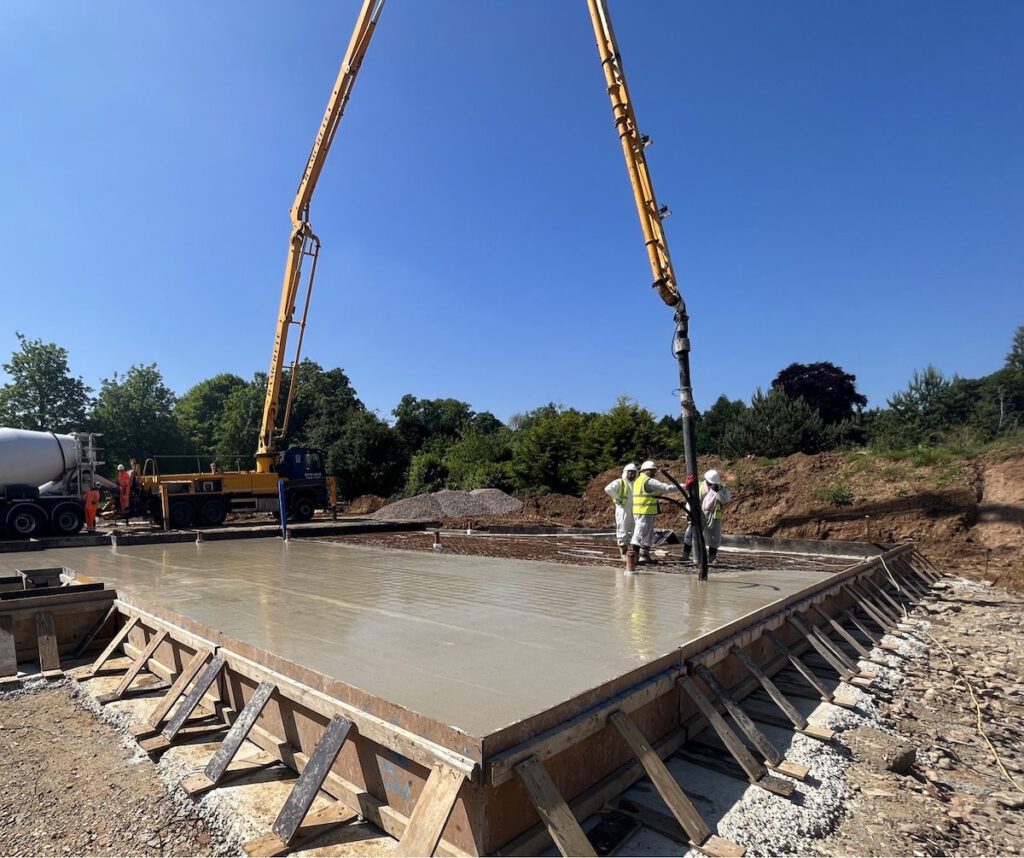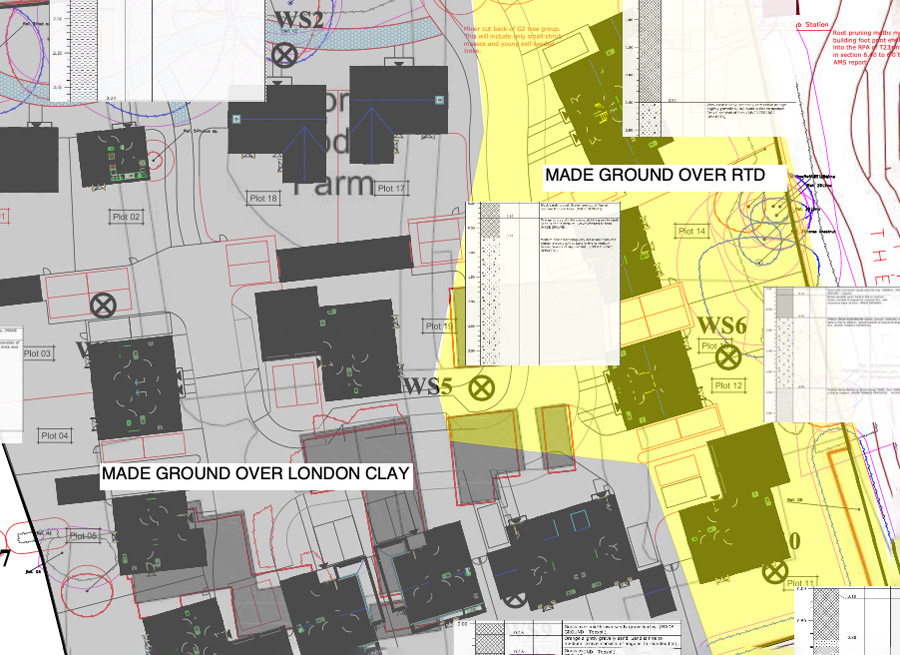
Ground Model resulting from comprehensive ground investigation
Ground investigations are not only essential but often mandated through planning conditions to ensure the stability and safety of any structure. However, the quality and scope of these investigations can vary significantly, and a poor-quality ground investigation can leave uncertainties that escalate costs and risks in the building process.
This article highlights the key considerations for specifying ground investigations for foundation design, with a particular focus on piled foundations. By understanding and addressing these considerations, developers can mitigate risks, optimise pile design, and ultimately save on costs and time whilst ensuring robust foundation performance.
What Causes a Bad Ground Investigation?
A ground investigation can fail to deliver the necessary quality for several reasons, often stemming from an unclear specification and objectives. This can lead to incomplete or inaccurate data or oversight of potential hazards and conditions that could impact the foundation design, compounded by time and cost pressures.
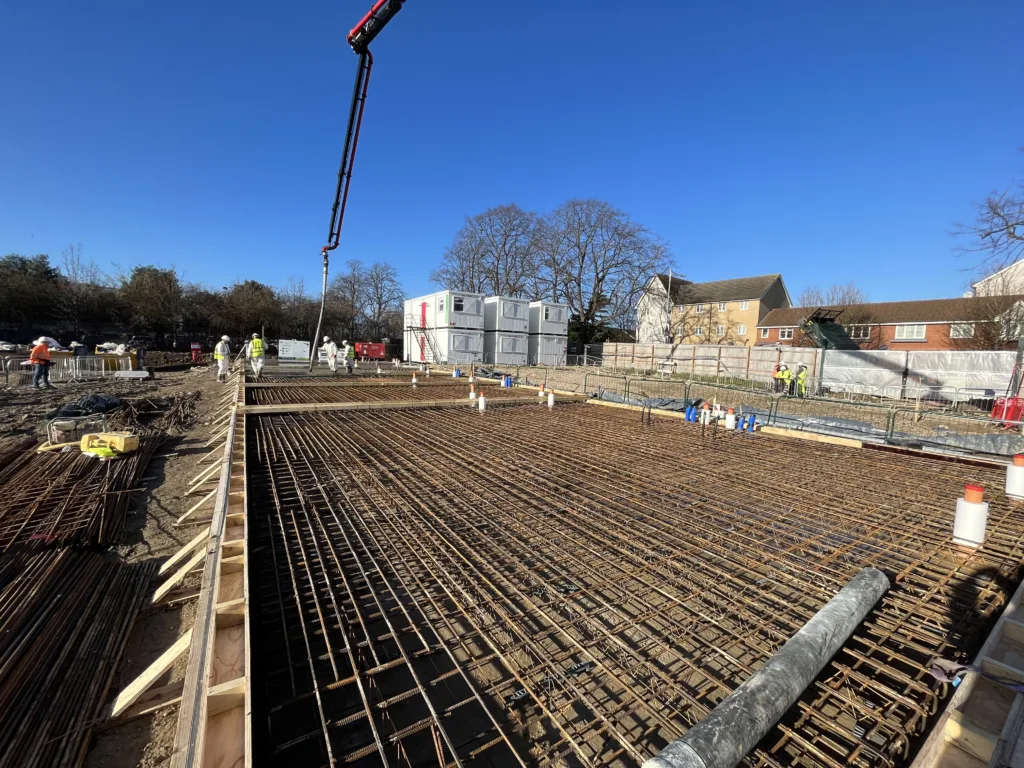
Piled Raft Foundation Construction suitable for Difficult Ground.
Developers are under pressure to keep projects within budget and on schedule, and the costs associated with a comprehensive ground investigation can seem unwelcome. However, an inadequate ground investigation can result in much higher costs later on, due to unforeseen ground conditions that necessitate expensive remediation or redesign that could have been avoided with a well-planned and executed investigation.
The Importance of Setting a Clear Scope for Ground Investigation
Many ground investigations are procured primarily on cost assessment, in many cases without a clear benchmark scope. This often results in critical investigations being awarded to contractors offering the smallest scope of works, leading to a race to the bottom in terms of quality. Such an approach frequently overlooks critical aspects of the build, particularly foundations, in favour of minimising upfront costs.

Challenging ground conditions require comprehensive site investigations to successfully zone the site for pile design, whilst minimising other risks.
Planning conditions that stipulate ground investigation are usually focused on the contamination of the ground. While addressing contamination is important, investigations that only meet these planning conditions without considering foundation design can necessitate additional investigations later, increasing costs and causing delays.
Setting a clear scope ensures that all necessary aspects of the investigation are covered, from contamination to foundation requirements.
Seeking specialist advice when specifying ground investigations is crucial. Experts can provide guidance on the appropriate scope and depth of the investigation, ensuring that all potential issues are identified and addressed. Taking a proactive approach enhances the quality of the investigation and contributes to the overall success and cost-efficiency of the construction project.
To achieve this success, it is essential to consider several key factors during the ground investigation process.
Key Considerations for Ground Investigation
Starting with a Desk-Based Assessment
A high-quality ground investigation should commence with a desk-based assessment. This initial study helps identify likely ground conditions, potential hazards, and suitable foundation types, tailoring the investigation to the specific project requirements.
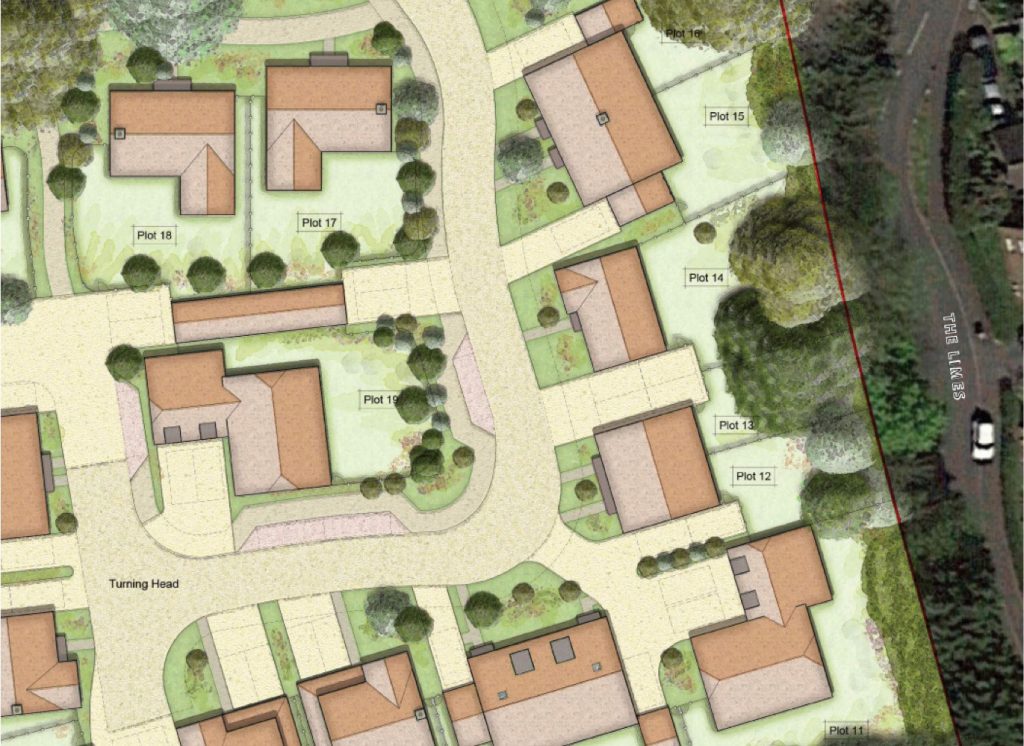
Geotechnical assessments for site investigation. Our geotechnical engineer will firstly spend time to gain an understanding of the history of the site, along with its former uses and the newly proposed development/changes of use.
Find out more about what a desk-based assessment for Ground Investigation can involve on our Geotechnical Assessments page.
Selection of Investigation Depths and Drilling Types
The selection of investigation depths and drilling types is critical and should be based on an understanding of the likely ground conditions. Properly chosen methods prevent the need for expensive remobilisations of alternative equipment. For example, cable percussive rigs may be suitable for certain soils, while rotary coring might be required for harder ground.
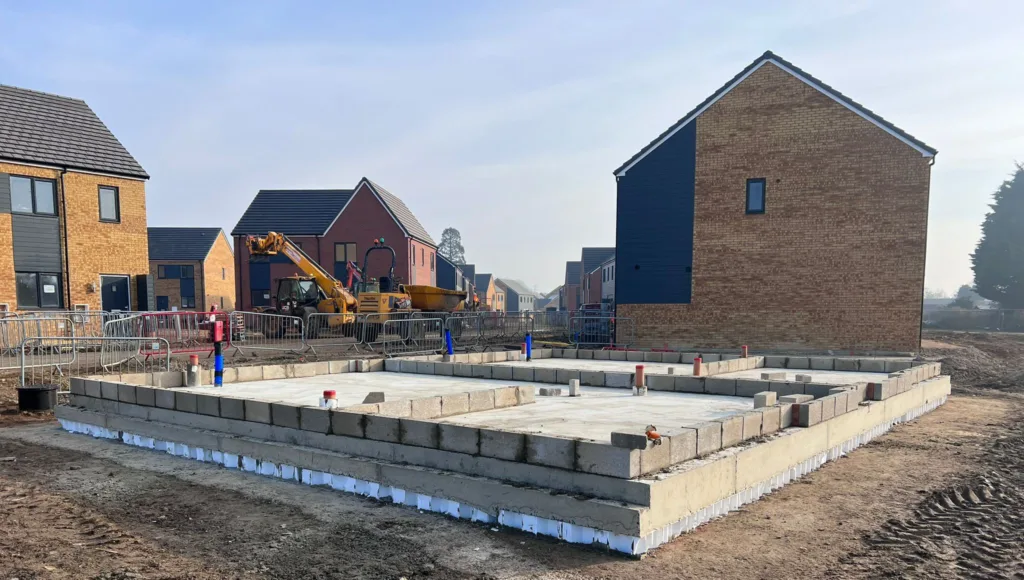
Completed Piled Raft Foundation at a 137 site residential development under construction.
Economical Piled Foundation Design through Ground Investigation
If considering piled foundations, it is essential to conduct deep borehole investigations to obtain sufficient information for proper pile design and whether the optimal requirement is for CFA or Driven Piling.
- Borehole Depths: Boreholes should extend well below the pile toe, typically by at least 3-5 metres. Third parties, such as warranty providers, may have specific requirements. Although the exact pile toe depth may not be known at the time of investigation, it is advisable to drill deeper rather than save costs by limiting depth. The cost of additional meterage in drilling is relatively low compared to the costs associated with mobilising drilling equipment.
- Standard Depth for Residential Piling: In residential projects in Southeast England, a drilled depth of approximately 20 metres is often sensible, though specific site details should always be reviewed.
- Equipment Choice: In many locations, particularly in Southeast England, cable percussive rigs are the most economical solution for deeper boreholes suitable for pile design. However, in areas with harder ground, rotary coring may be required to penetrate to the necessary depth.
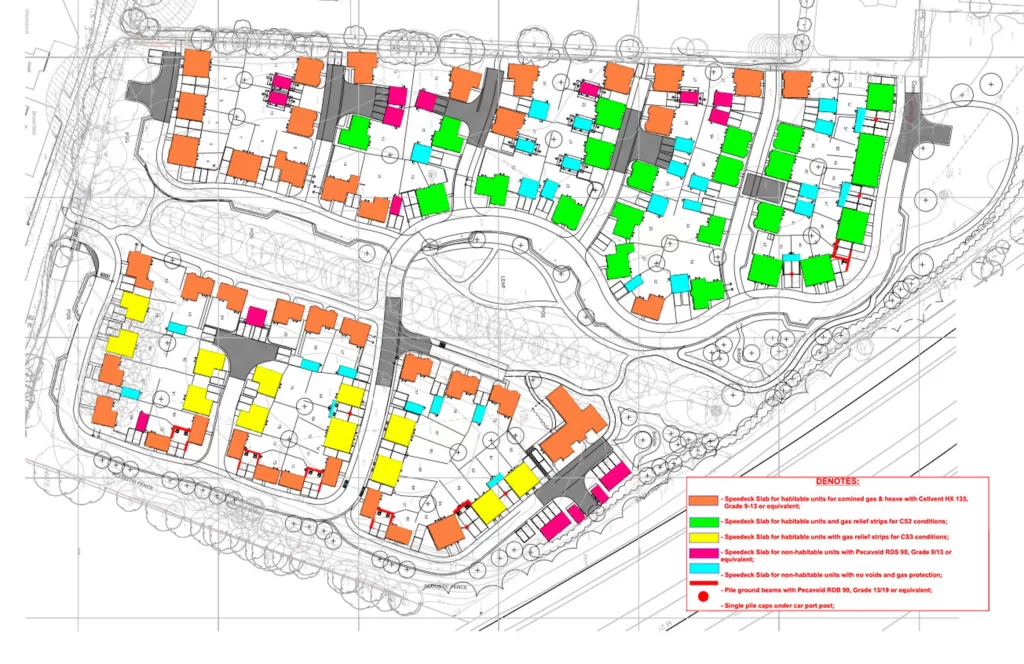
Foundation Plan for 100+ Residential site.
By ensuring deep and thorough borehole investigations, developers can gather the necessary data to design economical and effective piled foundations, ultimately saving costs and reducing risks associated with inadequate ground information.
Other Testing Methods for Ground Investigation
Other methods, such as Cone Penetration Testing (CPT), can also offer opportunities for a more economical pile design and investigate risks more efficiently than boreholes, particularly in terrains like karstic chalk and soft ground.

Cone Penetration Testing (CPT) consists of pushing an instrumented cone, with the tip facing down, into the ground at a controlled rate.
Geophysical surveys can also be useful in more complicated ground, to help zone sites, identify hazard areas or buried features etc. There are a wide range of techniques available for a multitude of applications. This is a highly specialised area and particular geophysical expertise should be sought.
In-Situ and Laboratory Testing
In-Situ and Laboratory Testing are just as important as the boreholes themselves, as the collected data will be used to aid the design of the foundations. Drilling holes without gathering sufficient data is ineffective.
Suitable and sufficient in-situ and lab testing are fundamentally important to ensure a comprehensive and reliable ground investigation is achieved, allowing our design engineers to provide the optimal foundation design whilst minimising risks associated with unforeseen ground conditions.
Standard Penetration Testing (SPT) is an inexpensive and extremely useful test for pile design that can be carried out at 1 to 1.5-meter intervals in all boreholes. It can be supplemented with Unconsolidated Undrained (UU) Triaxial strength tests in clay soils to increase the volume and quality of the data set.
Regular Unconfined Compressive Strength (UCS) testing in rock layers measures the maximum axial compressive stress a rock can withstand before failure, providing essential data for foundation design and stability analysis, with higher UCS values indicating stronger rock.
Sulphate Testing assesses the ground aggressivity towards concrete. It is essential to conduct sulphate tests at various depths, typically every 5 metres or at least ensuring every stratum is tested, to properly assess deeper soils and the potential impact on piles.
Investigations focussing on contamination matters will often only test the shallow soils for chemicals, leaving the deeper strata inadequately investigated, requiring further work down the line.

Housing Development near tree influence zones.
Sufficient testing to Assess Heave is necessary. Atterberg Limit and Particle Size Distribution tests at close spacing, typically every 1 metre in the top 3 metres, help build a clear picture of the ground’s susceptibility to heave. Click here for more details on managing and mitigating heave risks. Ground investigation was essential at our Croyland Road development, find out more here.
SPEEDECK’s Role in Ground Investigation for Piled Foundations
SPEEDECK is committed to providing expert guidance tailored to your specific project needs, and are experts when it comes to providing piled raft foundation solutions for sites requiring CFA or Driven piling. If you are considering your ground investigation requirements, we would be happy to advise on the particular specifications necessary for your site.
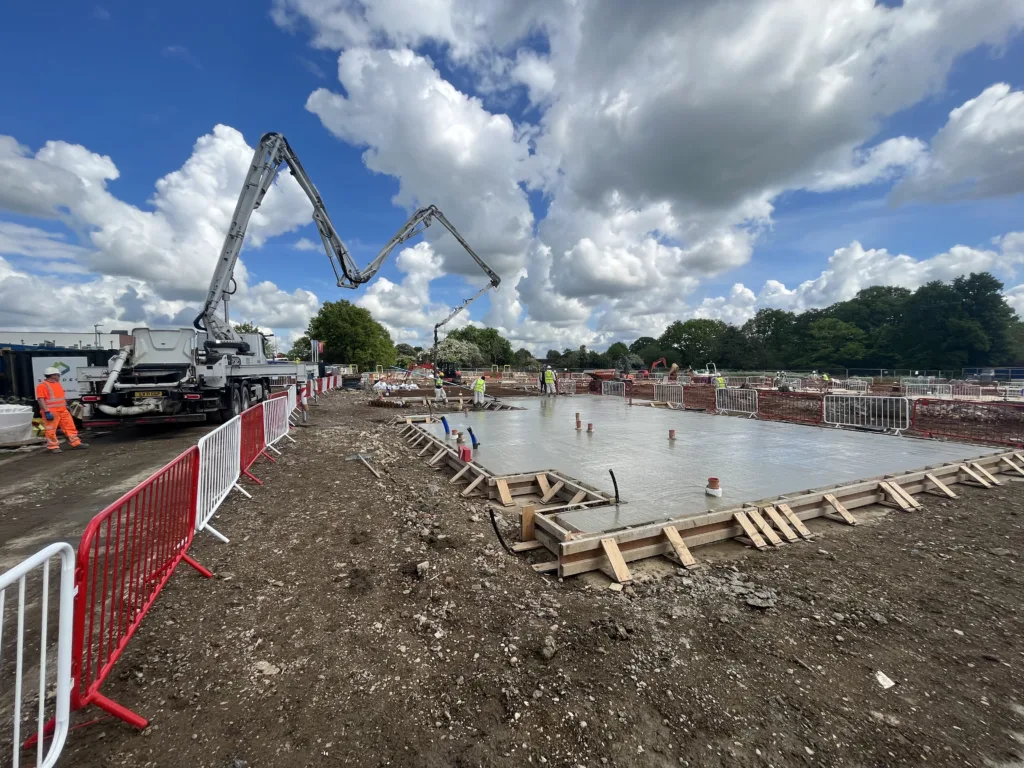
SPEEDECK on site in Cheshunt, completing 50 units of residential foundations.
At SPEEDECK, we ensure optimal foundation design by mitigating risks and enhancing construction efficiency. Our tailored solutions are designed to ensure optimal foundation design across the site, working with all necessary warranty providers and suppliers, providing you with the confidence needed for successful project execution.
Contact SPEEDECK today to discuss how we can support your ground investigation needs and contribute to the success of your construction project.

